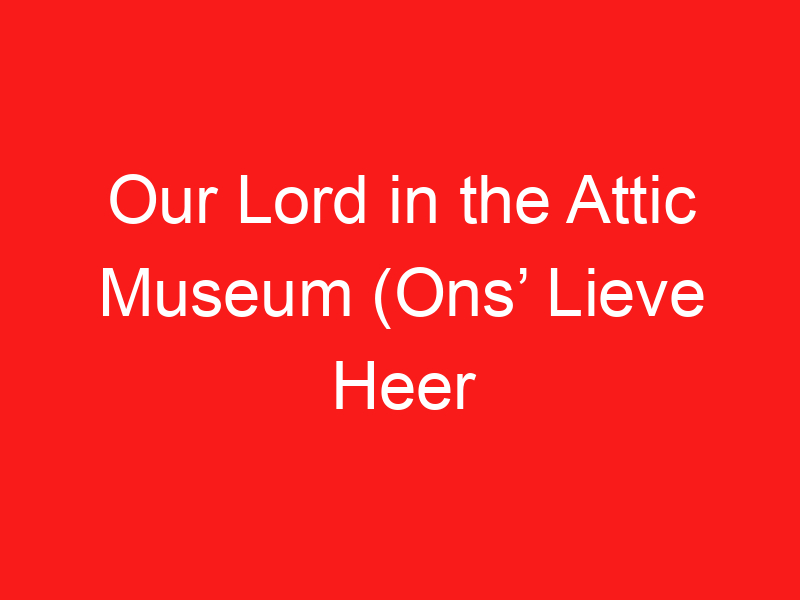Saint Nicholas Basilic ➥ (อ่านสิ่งนี้ก่อนเยี่ยมชม)
Saint Nicholas Basilic ➥ (อ่านสิ่งนี้ก่อนเยี่ยมชม)
When you think of historical landmarks that embody rich culture and spirituality, the **Saint Nicholas Basilic** stands out as a must-visit destination. Nestled in the heart of the enchanting city of Bari, Italy, this basilica is not just a church; it is a treasure trove of history, ศิลป์, and devotion.
As you step inside, you are enveloped by an atmosphere that resonates with centuries of faith and tradition. From its stunning architecture to its significant religious relics, every corner of the basilica tells a story.
ในบทความนี้, we will explore everything you need to know before visiting the **Saint Nicholas Basilic**, ensuring your experience is both enlightening and memorable. Prepare to delve into the depths of this remarkable site, uncovering its secrets and significance.
History of Saint Nicholas Basilic
The **Saint Nicholas Basilic** was constructed in the 11th century, specifically between 1087 และ 1197, to house the relics of Saint Nicholas, the Bishop of Myra.
This saint, known for his generosity and miracles, has been a figure of veneration for Christians around the world. The basilica was built to accommodate the influx of pilgrims who came to pay homage to him after his relics were brought to Bari from Myra, a city in present-day Turkey.
Architecturally, the basilica is a stunning example of Romanesque style, characterized by its robust structure and intricate details. The exterior features a striking façade with three large portals, adorned with beautiful sculptures that depict scenes from the life of Saint Nicholas and biblical stories.
As you approach the basilica, the grandeur of its design is immediately apparent. The bell tower, which rises majestically above the structure, adds to the overall beauty and serves as a landmark for travelers.
Inside, the basilica is equally impressive. The nave is lined with columns, each uniquely crafted, leading to the altar where the relics of Saint Nicholas are enshrined. The atmosphere is serene, inviting visitors to reflect and connect with the spiritual essence of the site.
The basilica has undergone various renovations and restorations over the centuries, ensuring that it remains a vital center of worship and pilgrimage. วันนี้, it stands not only as a religious site but also as a symbol of unity among Christians, particularly between the Eastern and Western churches.
Exploring the Architecture
The architecture of the **Saint Nicholas Basilic** is a testament to the artistic ingenuity of its time.
As you step inside, you’ll be greeted by a stunning interior that combines simplicity with grandeur. The use of local limestone gives the basilica a warm, inviting glow, while the intricate carvings and frescoes add an element of elegance.
The basilica’s layout is traditional, featuring a large central nave flanked by side aisles. The high ceilings are adorned with beautiful frescoes that depict various saints and biblical scenes, creating a heavenly atmosphere that captivates visitors.
One of the most striking features of the basilica is the crypt, which houses the relics of Saint Nicholas. The crypt is a sacred space, where pilgrims gather to pray and reflect. The ambiance is hushed and reverent, making it a profound experience for anyone seeking spiritual solace.
The altar, which sits above the crypt, is adorned with exquisite mosaics and gold accents, further highlighting the importance of this site.
Visitors are often left in awe of the craftsmanship that went into creating this architectural marvel. Each element, from the grand columns to the delicate sculptures, tells a story of faith, ศิลปะ, and devotion.
As you wander through the basilica, take a moment to appreciate the details that may easily be overlooked. The inscriptions, the artwork, and even the layout all contribute to the basilica’s rich history and significance.
Visiting Saint Nicholas Basilic: What to Expect
When planning your visit to the **Saint Nicholas Basilic**, there are several factors to consider to ensure a fulfilling experience.
ก่อนอื่น, the basilica is open to visitors throughout the week, but it’s advisable to check the specific hours of operation, especially if you plan to attend a mass or special event.
Upon arrival, you’ll notice that the basilica attracts a diverse crowd, from local worshippers to international tourists. The atmosphere is generally peaceful, allowing for personal reflection and exploration.
As you enter, be respectful of the sacred nature of the space. Silence is appreciated, and visitors are encouraged to dress modestly.
Guided tours are available, which can enhance your understanding of the basilica’s history and significance. These tours often provide insights that you might miss when exploring on your own, making them a worthwhile investment.
Photography is allowed, but be mindful of others and avoid using flash in areas where it may disturb the solemnity of the environment.
After exploring the basilica, consider visiting the nearby museum, which houses artifacts related to Saint Nicholas and the basilica’s history. This museum provides a deeper context for your visit and is a great way to continue your journey into the life of this beloved saint.
Relics of Saint Nicholas: A Spiritual Connection
The relics of **Saint Nicholas** are the heart of the basilica, drawing countless pilgrims and tourists alike.
Housed in a beautifully adorned crypt, these relics are believed to possess miraculous powers, making them an essential aspect of the basilica’s significance.
The story of how the relics came to Bari is fascinating. ใน 1087, a group of sailors from Bari stole the bones of Saint Nicholas from Myra, bringing them back to Italy. This act transformed the city into a major pilgrimage site, as people sought to connect with the saint’s spirit.
Visitors to the basilica often report feeling a profound sense of peace and connection when they approach the relics. The crypt is dimly lit, creating an atmosphere of reverence that encourages reflection and prayer.
Many pilgrims leave offerings at the crypt, seeking intercession from Saint Nicholas for various needs, whether it be health, prosperity, or guidance.
As you stand before the relics, take a moment to contemplate the legacy of Saint Nicholas, a figure known for his compassion and generosity. His life serves as an inspiration for many, reminding us of the importance of kindness and charity.
นอกจากนี้, the basilica hosts various religious events throughout the year, particularly around the feast day of Saint Nicholas on December 6th. These events attract thousands of visitors and create a vibrant atmosphere of celebration and devotion.
Tips for a Memorable Visit
2. **Dress Appropriately**: As a place of worship, modest attire is appreciated. Consider wearing clothing that covers your shoulders and knees.
3. **Be Mindful of Others**: The basilica can become crowded, โดยเฉพาะอย่างยิ่งในช่วงฤดูท่องเที่ยวสูงสุด. Be respectful of other visitors who are there for quiet reflection.
4. **Take a Guided Tour**: If you want to gain deeper insights into the basilica’s history and significance, consider joining a guided tour.
5. **Visit the Museum**: Don’t miss the opportunity to explore the museum nearby, which offers a wealth of information about Saint Nicholas and the basilica.
6. **Engage in Reflection**: Allow yourself some time to sit quietly and reflect. The atmosphere of the basilica is conducive to personal contemplation.
7. **Capture the Moment**: While photography is allowed, be sure to do so respectfully. Capture the beauty of the basilica while being considerate of others around you.
Frequently Asked Questions about Saint Nicholas Basilic
| ปัญหา | ตอบ |
|---|---|
1. What is the significance of Saint Nicholas? |
Saint Nicholas is known as the patron saint of children, sailors, and merchants. His legacy of generosity and kindness has inspired many traditions, including the modern-day figure of Santa Claus. |
2. Is there an entrance fee to visit the basilica? |
ไม่ใช่, visiting the basilica is free of charge. อย่างไรก็ตาม, donations are appreciated to help maintain the site. |
3. Are there guided tours available in multiple languages? |
ใช่, guided tours are available in several languages, รวมถึงภาษาอังกฤษ, Italian, and Spanish. Check the schedule for specific tour times. |
4. Can I attend a mass at the basilica? |
ใช่, the basilica holds regular masses. Check the schedule for times, especially if you wish to attend on a special feast day. |
5. What are the opening hours of the basilica? |
The opening hours vary seasonally. Typically, the basilica opens at 6:30 AM and closes around 7:00 นายกรัฐมนตรี, but it’s best to verify before your visit. |
6. Is the basilica accessible for people with disabilities? |
ใช่, the basilica is accessible for individuals with disabilities, with ramps and designated areas to accommodate all visitors. |
7. Are there any special events throughout the year? |
ใช่, the basilica hosts several special events, particularly around the feast day of Saint Nicholas on December 6th, attracting many pilgrims and tourists. |
บทสรุป
The **Saint Nicholas Basilic** is more than just a historical site; it is a living testament to faith, ประวัติศาสตร์, และชุมชน.
From its stunning architecture to the revered relics of Saint Nicholas, every aspect of the basilica invites exploration and reflection.
ขณะที่คุณเตรียมตัวสําหรับการเยี่ยมชมของคุณ, keep in mind the rich history, the spiritual significance, and the vibrant atmosphere that this sacred space offers.
Whether you are seeking spiritual solace, historical insights, or simply a moment of peace, the **Saint Nicholas Basilic** promises an experience that will resonate long after you leave its hallowed halls.
ดังนั้น, as you embark on your journey to this remarkable basilica, remember to take your time, soak in the beauty, and connect with the legacy of one of Christianity’s most beloved saints.


























